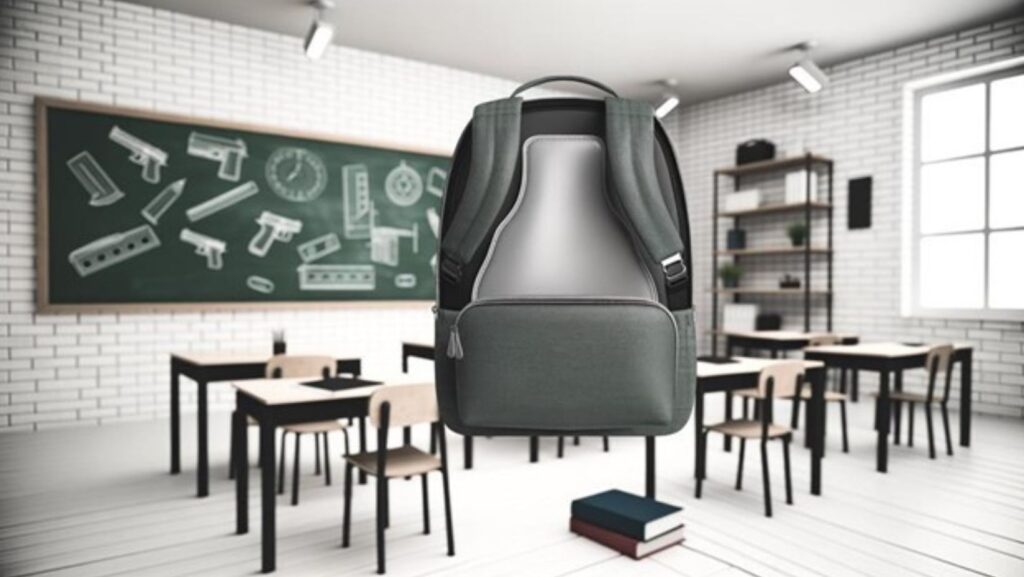When you think about enhancing school safety, have you considered the role of bulletproof backpack inserts? These inserts, crafted from materials like Kevlar or Dyneema, offer an additional layer of protection in active shooter situations. By disrupting bullet trajectory and minimizing penetration, they significantly reduce the kinetic energy of bullets. As schools look to integrate these inserts into their policies, clear guidelines, training, and certification standards become essential. But what are the key benefits for students, and how do you choose the right insert for your child?
Understanding Bulletproof Inserts
Understanding bulletproof inserts involves knowing their materials, effectiveness, and practical applications. You need to grasp the material composition, which plays a critical role in their performance. Common materials include Kevlar, Dyneema, and polyethylene. Kevlar is known for its high tensile strength and flexibility, while Dyneema offers superior impact resistance and lightweight properties. Polyethylene, on the other hand, combines strength with cost-effectiveness, making it a popular choice.
It’s essential to conduct a cost analysis when considering bulletproof inserts. Kevlar tends to be more expensive due to its complex manufacturing process. Dyneema, despite its high performance, can also be costly but offers excellent durability. Polyethylene often provides a more budget-friendly option without significantly compromising on protection. However, the initial cost isn’t the only factor; you should also consider the long-term value and potential replacement frequency.
Effectiveness hinges on both material and design. Inserts must meet stringent standards to ensure they provide adequate protection. By understanding the material composition and conducting a comprehensive cost analysis, you can make an informed decision about which bulletproof insert will best meet your needs.
Key Benefits for Students
Recognizing the materials and costs of bulletproof inserts leads us to explore their key benefits for students. One significant advantage is the potential enhancement of mental health. When students feel safer, they’re less likely to experience anxiety about their personal safety. This sense of security can foster a more conducive learning environment, allowing them to focus on their studies rather than potential threats.

Moreover, bulletproof backpack insert can positively impact peer relationships. In a school setting, where peer interactions are crucial, students equipped with these inserts may feel an increased sense of community and shared responsibility for safety. This can lead to stronger bonds and collaboration among students as they collectively navigate their educational journey in a safer environment.
Another benefit is the empowerment that comes with preparedness. Knowing they have an added layer of protection, students may develop greater confidence and resilience. This empowerment can extend beyond the classroom, influencing their overall outlook and approach to challenges.
In essence, the key benefits of bulletproof backpack inserts for students encompass improved mental health, stronger peer relationships, and a heightened sense of security, all of which contribute to a more positive and effective educational experience.
How They Work
Bulletproof backpack inserts function by utilizing layers of high-strength materials designed to absorb and dissipate the energy from ballistic threats. These insert materials typically include ultra-high-molecular-weight polyethylene (UHMWPE) or aramid fibers like Kevlar. They’re meticulously engineered to disrupt the trajectory of a bullet, spreading its force over a larger area to minimize penetration.
When a bullet strikes the insert, the energy is transferred through multiple layers. Each layer slightly deforms, progressively slowing the bullet and distributing its energy. This mechanism ensures that the bullet’s kinetic energy is significantly reduced before it can cause harm.
The effectiveness of these inserts is verified through rigorous ballistic testing, which simulates real-world scenarios to assess their protective capabilities.
Ballistic testing involves shooting various calibers of ammunition at the insert materials to determine their resistance levels. The inserts are evaluated based on their ability to prevent penetration and the extent of backface deformation (the bulging on the non-struck side). These tests are crucial for certifying that the inserts meet established safety standards.
Choosing the Right Insert
Given the complexities of how bulletproof backpack inserts function, it’s important to carefully choose the right insert to ensure maximum protection and practicality. Understanding the material options available is crucial. Inserts generally come in two main types: soft and hard.
Soft inserts are made from materials like Kevlar, which are lightweight and flexible, offering ease of use and comfort. Hard inserts, on the other hand, are constructed from materials such as ceramic or polyethylene, providing higher levels of protection but often being bulkier and heavier.
Certification standards are another critical factor to consider. To ensure you’re getting a reliable product, look for inserts certified by the National Institute of Justice (NIJ). The NIJ certification guarantees that the insert has undergone rigorous testing and meets specific safety criteria. Different levels of certification, ranging from Level II to Level IV, indicate the types of threats the insert can withstand.
Level II inserts protect against most handgun calibers, while Level IV can stop rifle rounds.
Integrating Into School Policies
Implementing the use of bulletproof backpack inserts into school policies requires a balanced approach, considering both safety benefits and potential concerns. You’ll need to start with policy implementation that aligns with your school’s existing safety protocols.
Establish clear administrative guidelines to ensure that these inserts are used effectively without causing unnecessary alarm or discomfort among students and staff. First, involve key stakeholders in the decision-making process, including educators, parents, and security experts. This ensures that the policy is comprehensive and addresses various perspectives.

Next, outline specific conditions under which these inserts should be used. For example, determine whether their use is mandatory or voluntary and how they should be distributed and maintained. Administrative guidelines should also include training for staff and students on the proper use of these inserts.
Conduct regular drills to integrate the inserts into current emergency procedures seamlessly. Additionally, the financial implications should be considered, and budget resources should be allocated for their procurement and maintenance.
Addressing Common Concerns
Parents and educators often express concerns about the practicality, safety, and psychological impact of using bulletproof backpack inserts in schools. You might wonder if these inserts are effective in real-world situations and whether they provide genuine safety rather than just a false sense of security.
While these inserts can add a layer of protection, they’re not a comprehensive solution to school safety issues. One of the primary parent concerns is the potential psychological effect on children. Carrying a bulletproof insert could instill fear rather than a sense of security, making school environments feel more like battlegrounds than places of learning.
Additionally, the weight and size of these inserts could hinder a child’s mobility and comfort, impacting their day-to-day school experience. Cost considerations also play a significant role. Bulletproof inserts can be expensive, and not every family can afford this added expense. This raises questions about equity and whether all students will have access to this form of protection.
Schools and policymakers must weigh these factors carefully, balancing the need for safety with the potential drawbacks to ensure any implemented measures are both effective and inclusive.
Conclusion
In conclusion, bulletproof backpack inserts are a practical step toward enhancing school safety. By understanding their benefits, how they work, and the importance of proper selection and policy integration, you’re better equipped to make informed decisions.
Remember, ‘an ounce of prevention is worth a pound of cure.’ These inserts provide peace of mind and a sense of security, helping to create a resilient and prepared learning environment for students.
Stay proactive for the safety of our future generations.



